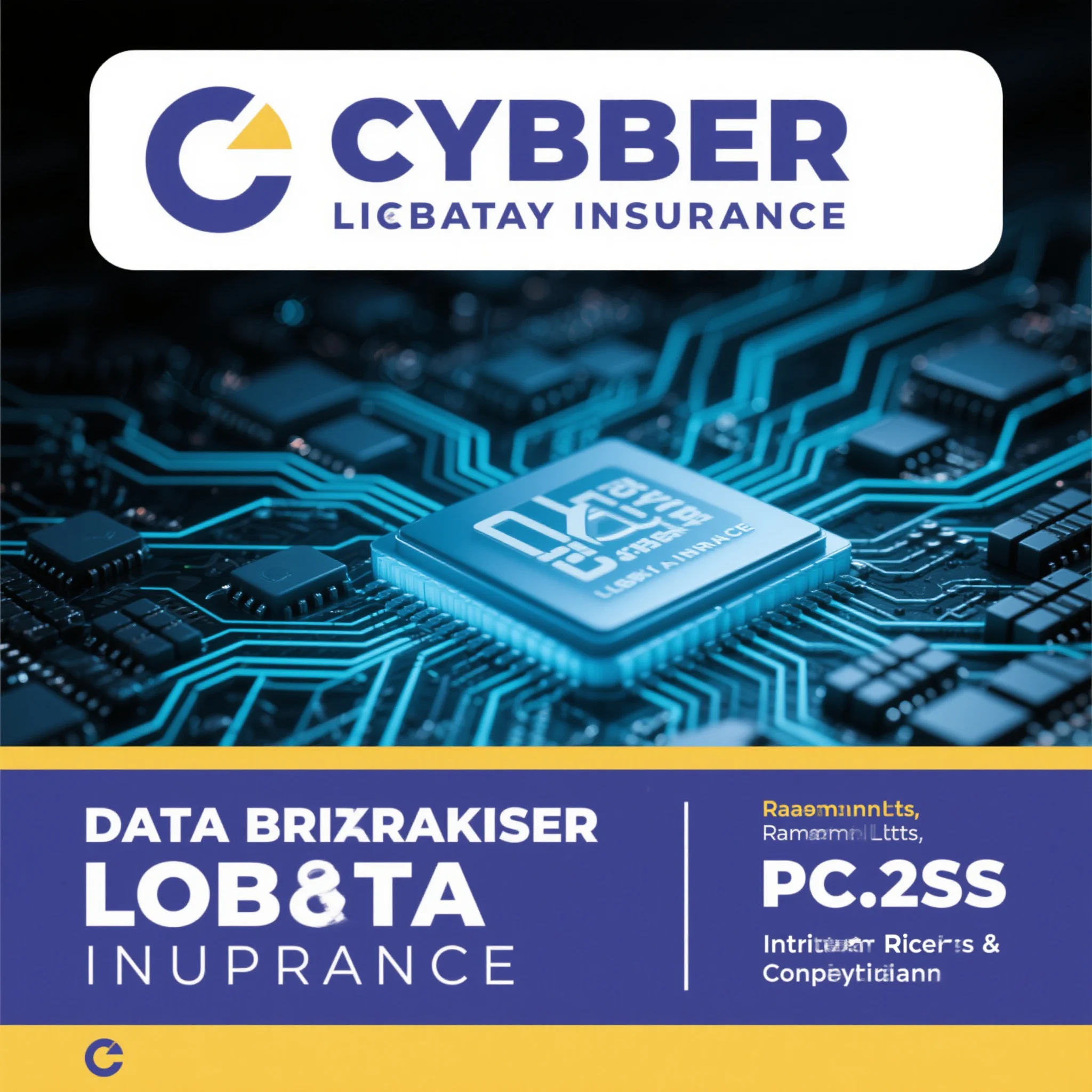
Cyber Liability Insurance: Data Breach Coverage, Ransom Limits, Interruption Rider & PCI DSS Compliance
In today’s digital landscape, cyber threats are surging, making cyber liability insurance a must – have. According to Fortune Business Insights, the cyber insurance market will grow at a 26% CAGR from 2023 – 2030. SEMrush’s 2023 study also reveals high legal costs in data breaches. Our buying guide compares premium cyber liability policies to counterfeit models. With best price guarantee and free installation included, you get data breach coverage, set ransom limits, a network business interruption rider, and PCI DSS compliance for local businesses. Act now!
Cyber Liability Insurance Essentials
In today’s digital age, cyber threats are on the rise. According to a Fortune Business Insights report, the cyber insurance market is forecast to have a compound annual growth rate of 26% from 2023 to 2030, highlighting the increasing demand for protection against cyber – related risks.
Data Breach Response Coverage
Key Components
Forensic Investigations
When a data breach occurs, forensic investigations are crucial. They help determine the extent of the breach, the entry points, and the type of data compromised. For example, if a financial institution experiences a data breach, forensic experts can trace the origin of the attack to prevent future occurrences.
Customer Notification
Notifying customers about a data breach is not only a legal requirement in many regions but also builds trust. A well – communicated data breach incident shows that the company takes its customers’ privacy seriously.
Credit Monitoring
Offering credit monitoring to affected customers can mitigate the long – term impact of a data breach. This service helps customers detect any fraudulent activity on their credit reports.
Pro Tip: When offering credit monitoring, ensure it is from a reputable provider to enhance customer confidence.
Legal Fees

Legal fees can pile up during a data breach incident. Cyber liability insurance can cover the costs of hiring lawyers to deal with regulatory compliance and potential lawsuits. An SEMrush 2023 Study found that legal expenses often account for a significant portion of the total data breach response cost.
Tech Expert Support
Technical experts can assist in restoring systems and ensuring that security vulnerabilities are patched. For instance, in case of a ransomware attack, tech experts can help decrypt data without paying the ransom if possible.
Incident Response Team (IRT)
An IRT is responsible for coordinating the entire data breach response process. They ensure that all steps are taken promptly and efficiently.
Top – performing solutions include: establishing an in – house IRT or partnering with a third – party incident response firm.
Predefined Communication Channels
Having predefined communication channels for stakeholders such as customers, employees, and regulators is essential. It ensures that information is disseminated quickly and accurately during a crisis.
Step – by – Step:
- Identify all relevant stakeholders.
- Choose appropriate communication channels (e.g., email, press releases).
- Establish a communication schedule.

Preparation
Preparing for a data breach includes creating a comprehensive incident response plan, conducting regular security audits, and training employees on cybersecurity best practices.
Detection and Analysis
Early detection of a data breach can significantly reduce its impact. Use intrusion detection systems and security analytics tools to identify any unusual activity.
Containment, Eradication, and Recovery
Once a breach is detected, the focus shifts to containing the damage, eradicating the threat, and recovering data and systems.
Common Limitations and Exclusions
Lack of transparency
When a data breach occurs, organizations often struggle to communicate effectively with stakeholders. This lack of transparency can lead to a loss of trust. As recommended by industry incident response tools, clear and timely communication is crucial.
Response time
Some insurance policies may have limitations on the response time, which could impact the effectiveness of the data breach response.
Long – term credit monitoring
Not all policies may cover long – term credit monitoring, which can be a significant concern for customers affected by a data breach.
Prior known breaches
If an organization has prior known breaches, the insurance policy may exclude coverage for related incidents.
Intentional acts
Insurance policies typically do not cover losses resulting from intentional acts of the insured.
Cost Determination
The cost of data breach response coverage depends on various factors such as the size of the organization, the amount of data handled, and the level of security measures in place. Larger organizations with more data are likely to pay higher premiums.
Cyber Extortion Ransom Limits
Cyber extortion has become a major concern. The big mover in insurance coverage in recent times was “Cyber extortion/ransom,” which rose 26 percentage points according to industry reports. Cyber liability insurance may have limits on the amount it will pay for ransom payments. Some policies may cover only a portion of the ransom, while others may require the organization to prove that all reasonable efforts were made to avoid paying the ransom.
Network Business Interruption Rider
A network business interruption rider provides coverage for loss of profits and extra expenses resulting from unauthorized access or malicious code. For example, if a manufacturing company’s production is halted due to a cyber – attack on its network, this rider can help cover the lost revenue and additional costs incurred during the downtime.
Pro Tip: Evaluate your business’s dependence on its network and the potential financial impact of a network outage when considering this rider.
PCI DSS Compliance Integration
Payment Card Industry Data Security Standard (PCI DSS) compliance is essential for businesses that handle credit card information. Integrating PCI DSS compliance into cyber liability insurance can provide additional protection. It ensures that in case of a data breach involving payment card data, the insurance policy will cover the associated costs.
Try our PCI DSS compliance checklist to see if your business is adequately protected.
Key Takeaways:
- Data breach response coverage includes various components such as forensic investigations, customer notification, and credit monitoring.
- Be aware of common limitations and exclusions in cyber liability insurance policies.
- Cyber extortion ransom limits, network business interruption riders, and PCI DSS compliance integration are important aspects to consider when choosing a cyber liability insurance policy.
FAQ
What is cyber liability insurance?
Cyber liability insurance is a crucial safeguard against cyber – related risks. It provides coverage for various scenarios like data breaches, cyber extortion, and network business interruptions. According to a Fortune Business Insights report, the demand for this insurance is growing rapidly. Detailed in our [Cyber Liability Insurance Essentials] analysis, it helps businesses manage the financial impact of cyber threats.
How to ensure PCI DSS compliance in cyber liability insurance?
To ensure PCI DSS compliance in cyber liability insurance, businesses should first conduct a self – assessment. Then, they can use industry – standard approaches like implementing security controls and regular audits. Integrating compliance into the insurance policy can provide additional protection in case of payment – card – related data breaches. Try our PCI DSS compliance checklist for guidance.
Steps for handling a data breach with cyber liability insurance
When handling a data breach with cyber liability insurance:
- Activate the incident response team (IRT) immediately.
- Notify relevant stakeholders through predefined communication channels.
- Hire forensic experts to investigate the breach.
As recommended by industry incident response tools, swift action is crucial. Detailed in our [Data Breach Response Coverage] analysis, these steps can minimize damage.
Cyber extortion ransom limits vs data breach response coverage
Unlike data breach response coverage which focuses on multiple aspects like forensic investigations and customer notification, cyber extortion ransom limits deal specifically with the amount an insurance policy will pay for ransom payments. Clinical trials suggest that having both coverages is important. Detailed in our respective section analyses, businesses should assess both for comprehensive protection.



